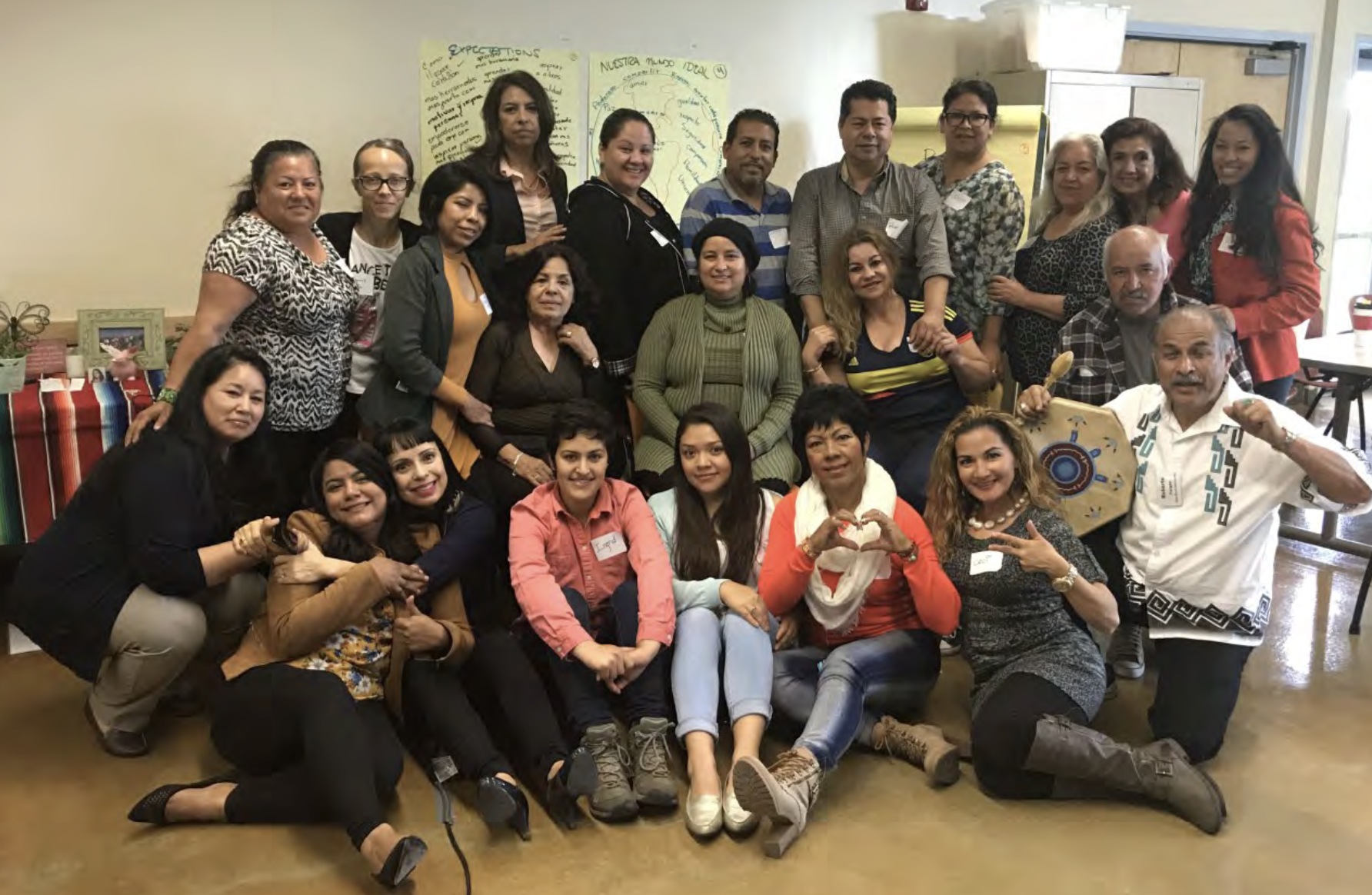The money California receives from its cap-and-trade program, in which polluting industries must control their emissions and pay for the emissions they do produce - thus paying something for the damage that pollution causes - has been invested in a range of programs that are supposed to help reduce emissions in other ways. One of those programs is the Transformative Climate Communities program, created by A.B. 2722 in 2016, with the intent of helping local communities lead and plan projects that could reduce emissions and bring economic, environmental, and health benefits. It's been called a national model
and "one of the most innovative, comprehensive, and equitable experiments in community-scale climate action."
That's because TCC is a unique program that requires solid local grounding. TCC funds planning, project development, and implementation for community programs that incorporate three basic elements: place-based projects based on community-identified needs; a holistic approach that integrates a wide range of greenhouse gas-reduction strategies such as sustainable land use, low-carbon and active transportation, renewable energy, and urban greening; and diverse cross-sector partnerships that include community members and local organizations.
The idea is that the TCC grants would catalyze further transformation, in part by helping communities come together, talk about what they need, and find and apply for other available grants, such as federal RAISE grants. The Strategic Growth Council (SGC), which manages the TCC grants, estimates that an additional $355 million in funds has been brought to TCC projects from other sources, nearly tripling its investments.
Since 2016, the SGC has given out TCC grants in over forty California communities impacted by legacy pollution, via five rounds of funding. UCLA's Luskin Center for Innovation was contracted to evaluate the community impacts of the implementation grants on Fresno, Ontario, Stockton, Pacoima, and Watts. The Center just released progress reports on each of those programs.
In addition to discussing in detail the individual projects created and funded within the grant, the reports contain personal stories and testimony from participants, many of whom have seen their lives and communities transformed by the work they've done. They contain discussions of the original community planning process and data on results, as well as the stories of individuals affected by the projects. Below is a summary of one of the reports, about the Green Together project in Pacoima, in the San Fernando Valley.
Pacoima: Green Together
Pacoima received an implementation grant for $23 million in the TCC's Round 2, in December of 2018. It has since completed twelve projects, three of which were fully funded by TCC - the others were planned under the Green Together program and leveraged a combination of TCC funding and other grants. They include a range of projects identified by the Pacoima community as things they needed, including pedestrian improvements like new sidewalk and wayfinding, ramps, and crosswalks, electric buses for LADOT's DASH bus fleet, as well as increased frequency of service, and electric vehicle charging, rooftop solar, new street trees, and stormwater capture.
The TCC requires grantees to develop three plans: a community engagement plan, a workforce development plan, and a displacement avoidance plan. These are to help ensure that TCC investments reflect the community’s own vision and needs, bring economic opportunities to low-income households, and minimize the risk of gentrification and displacement of existing residents and businesses.
Pacoima's community engagement plan established a leadership council that worked to strengthen existing communication channels to solicit resident input and conduct outreach. Its workforce development plan established the Green Together Resource Center, connected youth and residents with training and educational opportunities in urban forestry and the solar industry, and placed local residents in jobs related to the TCC projects. Its Displacement Avoidance Plan, which was not directly funded by the TCC, aimed to develop research projects to support anti-displacement efforts and link people with services and resources.
The UCLA report lists cumulative accomplishments, including formalized partnerships and a governance structure, and stronger community capacity from having residents identify and create their own solutions to local problems. The program brought solar to low-income homes, increased shade by planting trees, conducted tenants' rights workshops, and empowered local residents to take on greater leadership roles, helping them build their communication skills, climate literacy, and relationships with project partners. The pandemic disruptions delayed but did not end the work, which continues.
One of the case studies highlighted in the Pacoima report is of Phillip Martinez, who was born and raised in Pacoima. His energy bills were rising with the heat, but when a representative of GRID Alternatives, which is managing the free solar installments that Green Together had identified as a community need, he was skeptical. He knew others in his community who end up paying a monthly fee for solar power. But he was reassured, and the solar panels immediately lowered his power bills.
One of the benefits seen in this case study - and with other TCC projects - is that they build trust among initially skeptical residents, who may find it hard to believe that installing solar panels won't cost them. That has meant more community partners who are happy to spread the word to others, so more people can benefit from the savings - and more people reduce their reliance on the energy grid.
Another series of case studies interview youth trained to work as Clean Air Ambassadors. This job involves monitoring air quality, collecting and analyzing data, and sharing their new knowledge with other community members. “I didn’t know how bad the air quality was and I wanted to know more about how I could help, because I know air quality can affect your health just as bad as smoking,” said Huong Tran, one of the trainees.
Grants in Other CA Cities
See the project reports for other communities here:






